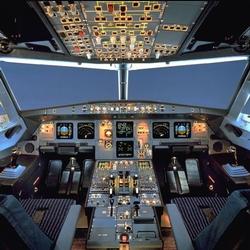Fri, Aug 23, 2013
Redesign For Sudden Autopilot Disconnection Needed, Say Flight Safety Experts
Flight safety experts associated with the Human Factors and Ergonomics Society studying recent high-profile aviation accidents found sudden autopilot disconnection to be a design flaw that creates unnecessary emergencies by surprising pilots during critical, high-workload episodes.

“The sudden disengagement of autopilot is analogous to a pilot suddenly throwing up his or her hands and blurting to the copilot, ‘Your Plane!’” said Eric E. Geiselman, lead author of a recently published two-article Ergonomics in Design series, “Flight Deck Automation: Invaluable Collaborator or Insidious Enabler” (July issue) and “A Call for Context-Aware Logic to Improve Safety”.
Eric E. Geiselman, along with co-authors Christopher M. Johnson, David R. Buck, and Timothy Patrick, have combined expertise as pilots, crew resource management instructors, and human factors researchers. They studied the 2009 Colgan Air crash in Buffalo, New York, and the 2009 Air France crash off the coast of Brazil with a focus on how humans and machines can best communicate on the flight deck.
The authors recommend that autopilot systems transfer controls following the same protocols crew members use – with acknowledgement by the receiving pilot that he or she has assumed control. FAA regulations require a visual and auditory warning to occur following autopilot shutoff, but Geiselman and his co-authors emphasize that such warning should occur before – not after - autopilot is disengaged.
The authors report on many other design-level safety issues in these articles and offer prototypes featuring solutions that can be affordably implemented with available technology. They believe better design of automation technology on planes can prevent future accidents and that more pilot training shouldn’t be the only solution pursued by the industry.
The Human Factors and Ergonomics Society is a nonprofit individual-member, multidisciplinary scientific association for human factors/ergonomics professionals, with more than 4,600 members globally.
More News
Aero Linx: Model Aeronautical Association of Australia MAAA clubs are about fun flying, camaraderie and community. For over 75 years, the MAAA has been Australia’s largest fl>[...]
Touchdown Zone Lighting Two rows of transverse light bars located symmetrically about the runway centerline normally at 100 foot intervals. The basic system extends 3,000 feet alon>[...]
“Discovery and innovation are central to our mission at Virgin Galactic. We’re excited to build on our successful record of facilitating scientific experiments in subor>[...]
How To Get A Story On Aero-TV News/Feature Programming How do I submit a story idea or lead to Aero-TV? If you would like to submit a story idea or lead, please contact Jim Campbel>[...]
Student Pilot Reported That During Rotation, “All Of A Sudden The Back Of The Plane Kicked To The Right..." Analysis: The student pilot reported that during rotation, “>[...]
 ANN's Daily Aero-Linx (05.02.24)
ANN's Daily Aero-Linx (05.02.24) ANN's Daily Aero-Term (05.02.24): Touchdown Zone Lighting
ANN's Daily Aero-Term (05.02.24): Touchdown Zone Lighting Aero-News: Quote of the Day (05.02.24)
Aero-News: Quote of the Day (05.02.24) ANN FAQ: Contributing To Aero-TV
ANN FAQ: Contributing To Aero-TV NTSB Final Report: Cirrus Design Corp SR20
NTSB Final Report: Cirrus Design Corp SR20



